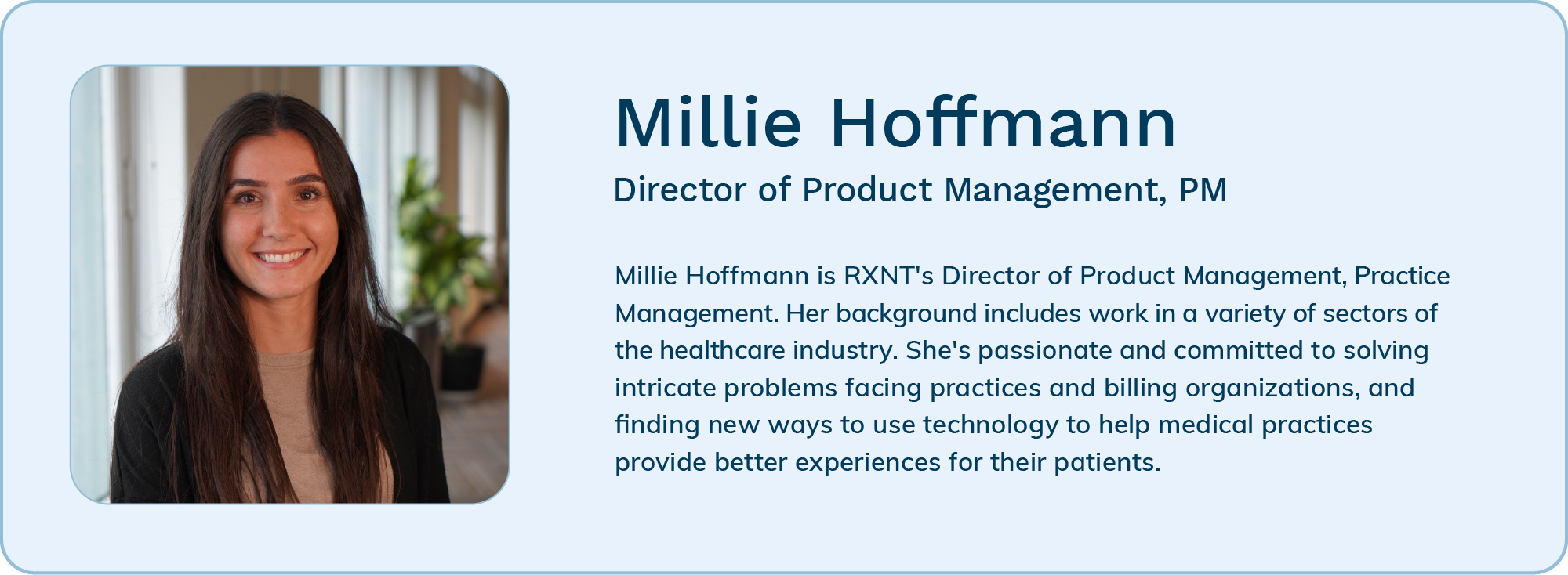It can be a challenge to find a starting point for building out your RCM strategy, especially as you navigate your practice’s day-to-day priorities. That’s why we’re sharing our best practices for simplifying and optimizing RCM below.
Implementing a revenue cycle management (RCM) strategy can be daunting for small or independent medical practices. Managing patient payments, insurance claims, and meeting regulatory requirements demands specialized expertise, which may be harder to access than in larger health systems.
It can be a challenge to find a starting point for building out your RCM strategy, especially as you navigate your practice’s day-to-day priorities. That’s why we’re sharing our best practices for simplifying and optimizing RCM below.
4 Reasons RCM is a Challenge for Independent Practices
Why is RCM so challenging for independent practices? There are many factors that contribute to its complexity. Understanding the obstacles and what’s ahead can help you plan ways to overcome obstacles when creating your RCM strategy. Here are four common RCM challenges:
- Complex Regulations and Insurance Requirements: There are many regulations and insurance requirements to be aware of and comply with. Meeting them requires significant administrative work, which can take time away from patients and more strategic initiatives like RCM.
- Lack of Expertise and/or Resources: Depending on the size of your practice, you may not have many internal resources or employees with the skillset or bandwidth to own the RCM process.
- Inefficiencies and Technical Debt: Outdated processes and technical solutions can introduce latency into your operations, leading to greater administrative burden, denied payments, and longer revenue cycles.
- Claim Denials: It’s estimated that 15% of all claims submitted to payers for reimbursement are initially denied. Each denied claim costs your practice time and money to rework. It’s key to have a strategic approach to preventing denials in the first place to protect your practice’s finances.
7 Best Practices for Better RCM
Fortunately, there are effective, straightforward ways to overcome those obstacles. Below, you’ll find strategies to optimize RCM across your practice.
1. Accurate Patient Data Collection
Set things off right by prioritizing data accuracy. You want to ensure any patient data you collect, including demographics, insurance information, and consent forms, is complete and up-to-date. This is a tough task to complete via paper-based processes. Instead, we recommend using technology like online patient forms to streamline this process. Doing so will reduce errors and improve efficiencies in your billing and claims processes.
2. Implement Systematic Follow-Up Procedures
A major aspect of an RCM strategy is tracking claims and payments. Manually following up on unpaid accounts or claims can be tedious and time-consuming. It’s best to take a systematic approach to these processes by using automated reminders when possible. Practice management software can help you personalize patient communications, track outstanding balances, and follow up on claims.
3. Real-Time Eligibility Verification
Avoid claims denials by embedding insurance eligibility in real-time at the time of scheduling and billing. This simple step of confirming coverage before services are rendered and billed will save you resources and headaches down the line.
4. Accurate Coding and Clean Claim Submission
As part of your RCM strategy, ensure that all staff follow current coding procedures to minimize claims denials. Ongoing coding education is a wise investment. When submitting claims, use claims scrubbing tools to identify and correct errors before submission.
5. Proactive Denial Management
Of course, there will always be some denied claims. Use a tracking system to monitor claims status and uncover denial trends. This will help you understand the factors driving denials so you can reduce them in the future. You will also want to establish a process for appealing any denied claims.
6. Efficient Payment Posting
To keep accounts current, post payments promptly and accurately. This step will include processes to post payments as they are received so you can ensure the most accurate view of your current revenue. With the right technology in place, this step can be made to take minimal time for staff.
7. Patient-Friendly Statements
Confusing statements are more likely to be ignored or questioned by patients. Include a clear breakdown of charges to drive prompt payment and patient satisfaction.
From there, make it a priority to monitor your RCM strategy and its performance. Keep track of your operating costs and key revenue cycle metrics to see what’s working and what needs to be adjusted. Taking a proactive approach, following best practices, and regularly adjusting your efforts will set your practice up for financial success.
The right tools and insights can help you simplify RCM and achieve greater efficiency. At RXNT, we’re here to help. Get a free demo today to see how RXNT can improve your RCM strategy.






